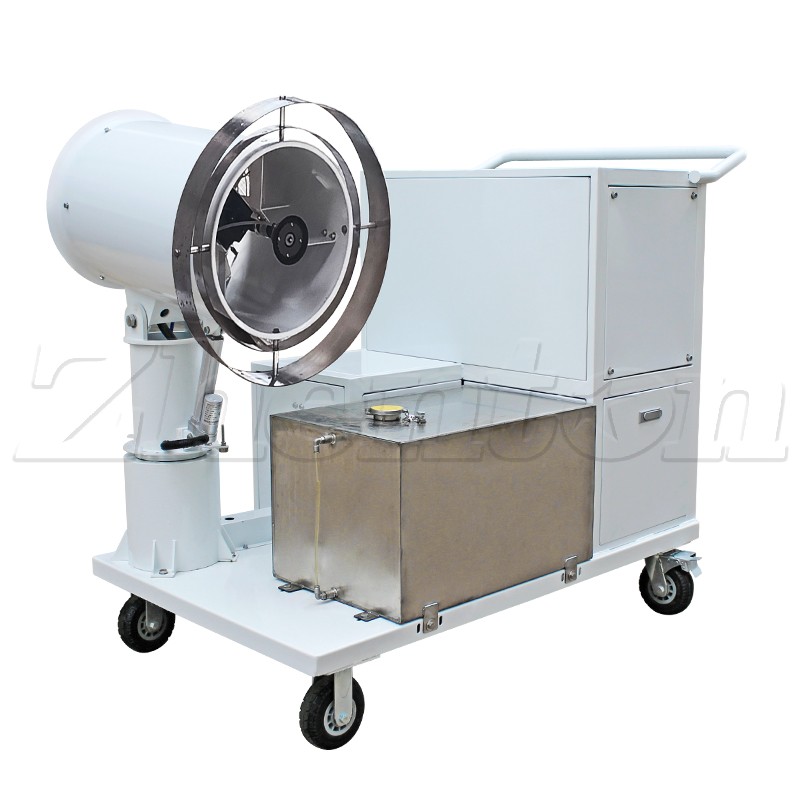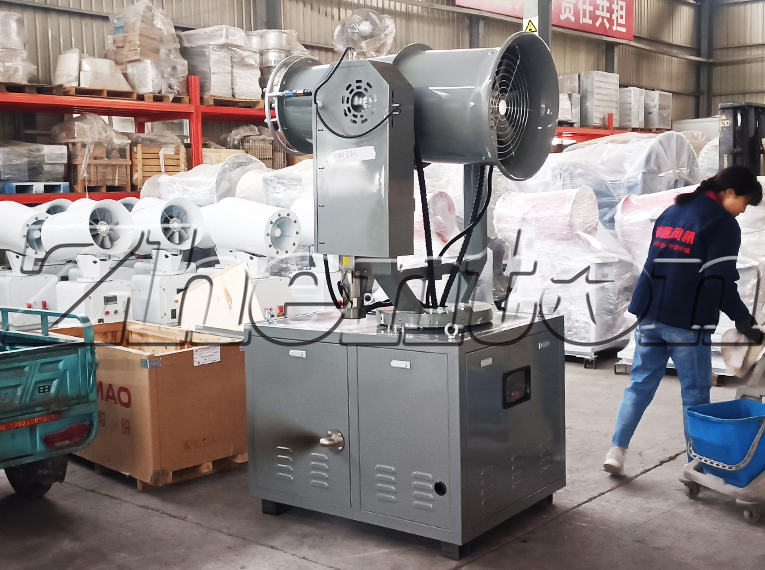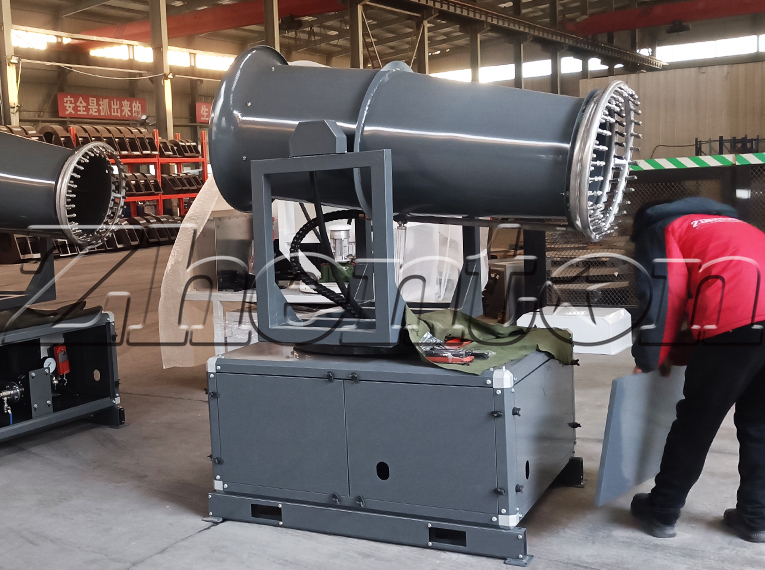
As urbanization accelerates, road dust has become a major contributor to air pollution. Traditional water sprinklers can ease surface dust but struggle with fine particles like PM2.5. Selecting an efficient and intelligent dust suppression machine has become a key challenge for municipal sanitation departments and construction enterprises. In recent years, the vehicle-mounted fog cannon machine has emerged as the mainstream choice for road dust control, leveraging precise dust suppression and flexible adaptability to offer a technology-driven solution for urban cleanliness.
Traditional water sprinklers rely on high-pressure nozzles or low-pressure sprays, producing water droplets over 500 microns in diameter. These can only suppress surface dust, proving ineffective against airborne PM2.5 and PM10. The strong water flow also creates muddy roads, increasing the risk of secondary pollution.
Urban roads feature complex areas like under viaducts, tunnels, and greenbelts, where traditional dust suppression machines fail to achieve comprehensive coverage due to limited range (10–20 meters) and fixed spraying angles. Close-range operation during traffic peaks further endangers road safety.
Traditional dust suppression machines consume 5–10 tons of water per operation and lack precise control over chemical spraying, leading to significant resource waste. Some models also exceed noise limits and have low energy efficiency, conflicting with the goals of green sanitation.
Vehicle-mounted fog cannon machines integrate “long-range spraying + fine atomization + intelligent control” to overcome traditional limitations, serving as the core upgrade for water sprinklers:
Equipped with high-power fans and high-pressure atomization systems, these machines achieve a static wind range of 50–120 meters (model-dependent), enabling high-altitude dust suppression for complex road structures like viaducts. Combined with the mobility of water sprinklers, a single vehicle-mounted fog cannon machine can cover over 300,000 m² daily, drastically improving efficiency.
Using aviation-grade nozzles, these dust suppression machines atomize water into 20–200-micron droplets—1/25 the size of traditional sprinkler droplets. This creates a “Brownian motion adsorption effect” with PM2.5, boosting dust suppression efficiency by over 60% compared to conventional methods. In heavily polluted areas like construction sites and mines, adding dust suppressants forms a composite suppression network for enhanced results.
Featuring a PLC control system, these machines support remote APP operation and real-time linkage with dust concentration sensors (optional), automatically adjusting spray volume and duration based on air quality data. They achieve a 40% water-saving rate and 30% fuel reduction, significantly optimizing life-cycle costs.
With modular design, vehicle-mounted fog cannon machines are compatible with various sprinkler chassis—sanitation trucks, cargo trucks, and new-energy vehicles—supporting 360° rotation and adjustable angles (-10° to 45°). Whether used on urban main roads, industrial parks, or demolition sites, customized solutions ensure precise dust suppression.

Range Matching: Choose 50–80-meter models for urban roads to balance coverage and safety; opt for over 100-meter ranges for open areas like mines and ports.
Atomization Granularity: Prioritize multi-gear adjustable models (20–50 microns for PM2.5, 50–150 microns for PM10) to adapt to different pollution levels.
Endurance and Load: Ensure a water tank capacity of 10–15 tons and a dual-power system (diesel/electric) for ≥8 hours of continuous daily operation.
Certifications: Select models with CE and ISO9001 certifications to guarantee safety and noise compliance.
After-Sales Service: Verify that manufacturers offer 三包 (three guarantees) service, remote fault diagnosis, and readily available spare parts (nozzles, filters) to minimize downtime.
While vehicle-mounted fog cannon dust suppression machines have 20–30% higher initial costs than traditional equipment, they deliver long-term savings:
Water and Chemical Savings: Reduce annual water/chemical costs by 30–50%.
Increased Efficiency: Single-operator vehicles can cover multiple areas, reducing labor costs.
Policy Incentives: New-energy models compliant with China’s “double carbon” goals qualify for government subsidies.
A second-tier city’s sanitation department saw three transformative results after adopting an 80-meter range vehicle-mounted fog cannon dust suppression machine:
Efficiency: Completed the daily work of 3 traditional sprinklers in just 4 hours.
Quality: Reduced road PM2.5 by 22% monthly and cut dust-related complaints by 60%.
Cost: Slashed annual water consumption from 1.2 million to 700,000 tons and reduced maintenance costs by 40%.

Road dust control is a long-term battle requiring technological innovation. Vehicle-mounted fog cannon dust suppression machines set a scientific standard with precision, intelligence, and sustainability. Under China’s 14th Five-Year Plan for environmental protection, selecting such future-proof equipment is not just policy compliance but a necessity for enhancing urban management and protecting blue skies.
Upgrade your sanitation fleet today—let vehicle-mounted fog cannon dust suppression machines become the “tech vanguard” of urban cleanliness, driving efficient dust control and contributing to green, low-carbon development!Vehicle-mounted fog cannon machine dust suppression machines offer long-range, fine atomization, and intelligent control, doubling efficiency, cutting costs, and boosting green sanitation for urban roads.
Contact With Us
If you have any questions please fell free to contact with us.